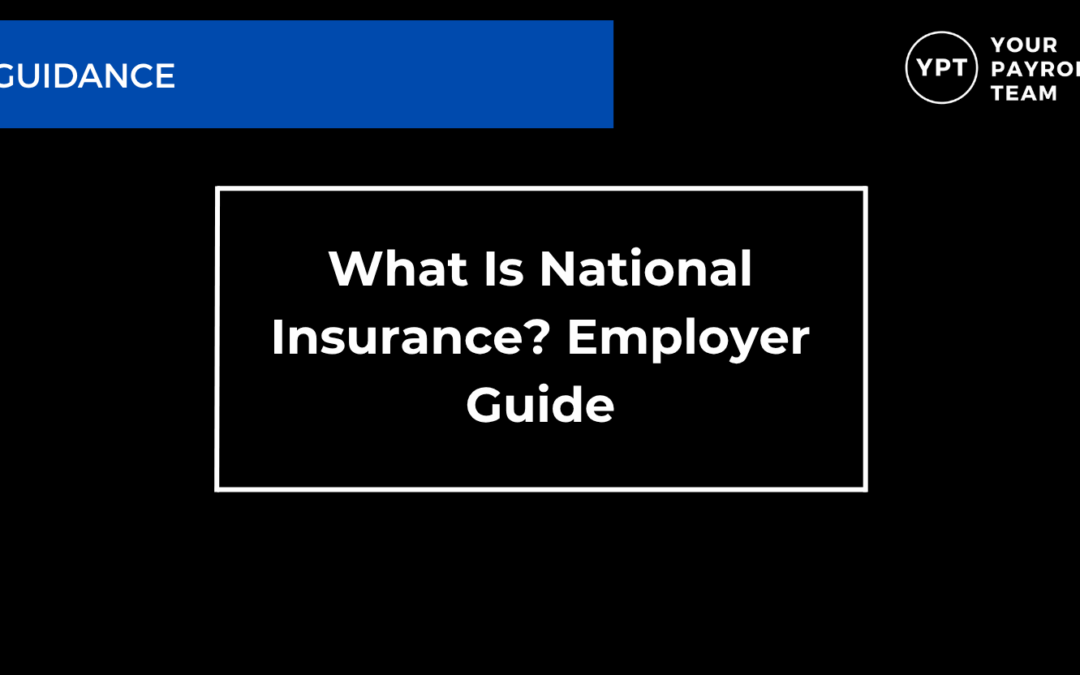National Insurance (NI) is a tax that helps fund state benefits such as the State Pension, maternity allowance and certain unemployment benefits.
Employers must deduct the correct NI from employees’ pay and also pay employer NI on top.
This guide explains how NI works, what employers must do, and the common mistakes to avoid.
What National Insurance Does
National Insurance:
-
Helps fund state benefits
-
Determines employees’ State Pension entitlement
-
Applies differently depending on age and employment status
-
Must be calculated correctly every pay period
-
Is reported to HMRC through RTI
It works alongside PAYE but is calculated differently from Income Tax.
Employee National Insurance (Class 1 Primary)
Employees pay NI on their earnings above certain thresholds if they:
-
Are aged 16 or over
-
Earn above the Lower Earnings Limit
-
Are classified as employees for PAYE
How employee NI works
Employee NI is deducted:
-
Automatically through payroll
-
Based on earnings in that pay period
-
At different percentage rates depending on thresholds
Payroll software does the calculation — but only when the correct NI category letter is used.
Employer National Insurance (Class 1 Secondary)
Employers also pay NI contributions on their employees’ earnings.
Employer NI:
-
Applies once earnings pass the Secondary Threshold
-
Is not deducted from the employee
-
Must be paid to HMRC along with PAYE
-
Can be reduced using reliefs such as the Employment Allowance (if eligible)
Employer NI is often overlooked as a significant employment cost.
National Insurance Category Letters
NI calculations depend on using the correct NI category.
Key categories include:
-
A – Standard employees
-
B – Married women/widows with reduced rate (rare)
-
C – Employees over State Pension age
-
H – Apprentices under 25
-
M – Employees under 21
-
Z – Under 21 with deferred NI
-
J – Employees with more than one job (deferred NI)
Using the wrong NI category is one of the most common payroll mistakes.
How National Insurance Is Calculated
NI uses:
-
The employee’s earnings in the pay period
-
Their NI category
-
The current NI thresholds and rates
-
Whether they are a director (special rules apply)
-
Whether salary sacrifice reduces NI-able pay
Important differences from tax:
-
NI is not cumulative — it resets every pay period
-
Tax uses tax codes; NI does not
-
NI thresholds differ depending on category
-
Directors are calculated using annual earnings method unless alternative arrangements are used
Special Rules for Directors
Directors follow an annual earnings period, meaning NI is smoothed over the year.
This prevents over- or under-deduction due to fluctuating pay.
Two methods exist:
-
Director’s annual method (default)
-
Alternative arrangements method – spreads NI more evenly during the year
This is an area where mistakes are common.
Salary Sacrifice and National Insurance
Salary sacrifice:
-
Reduces NI for both employers and employees
-
Must be set up correctly
-
Changes NI-able pay, not taxable pay
-
Can affect pension contributions and statutory payments
Incorrect handling often leads to underpayments or overclaims.
Reporting National Insurance to HMRC (RTI)
Every pay run, NI must be reported on:
-
FPS – Full Payment Submission
-
EPS – for adjustments, recoveries or allowances
Incorrect reporting can trigger HMRC queries.
When Employers Pay HMRC
PAYE, employee NI, employer NI and other deductions must be paid to HMRC:
-
By the 22nd of the following month (if paying electronically)
-
Or the 19th (if paying by cheque/post)
Quarterly payment options exist for small employers.
Employer Responsibilities
Employers must:
-
Apply correct NI category letters
-
Deduct the correct employee NI
-
Pay the correct employer NI
-
Apply director NI rules properly
-
Handle salary sacrifice accurately
-
Keep payroll records for at least 3 years
-
Submit accurate RTI returns
-
Pay HMRC on time
Even with payroll software, the employer remains legally responsible.
Common National Insurance Mistakes
Typical issues include:
-
Wrong NI category (A instead of M, C instead of A, etc.)
-
Incorrect director NI calculations
-
Salary sacrifice reducing taxable but not NI earnings
-
Missing apprenticeship or under-21 relief
-
Incorrect treatment of part-year workers
-
NI deducted from employees over State Pension age
-
Wrong thresholds due to outdated payroll software
These errors can lead to overpayments, underpayments or HMRC interventions.
How We Help Employers with NI
Your Payroll Team supports employers with:
-
NI category reviews
-
Director NI checks
-
Salary sacrifice setup and compliance
-
Correcting NI errors
-
Reviewing under- or over-payments
-
Full outsourced payroll
-
PAYE/NIC compliance reviews
Talk to a Payroll Specialist About NI
FAQ: National Insurance for Employers
Do employees stop paying NI at State Pension age?
Yes — but employers must still pay employer NI unless in an exempt category.
Do NI category letters change automatically?
No. Employers must update categories when circumstances change (e.g., age milestones).
Can NI be refunded if calculated incorrectly?
Yes — payroll can correct NI errors in-year or through amended FPS.
Is NI the same as PAYE?
No — they are different calculations, thresholds and rules, but both flow through payroll.

